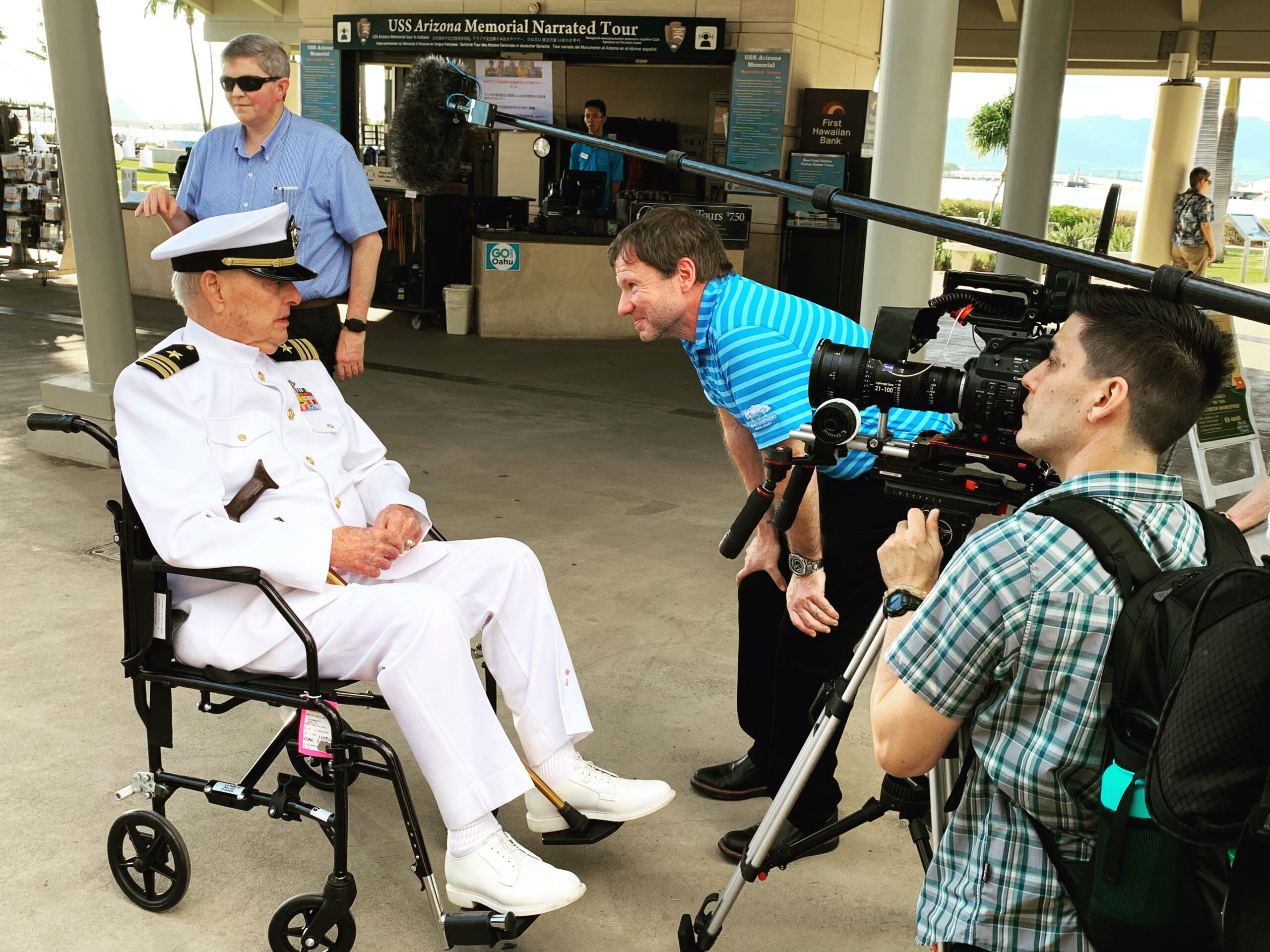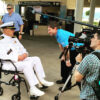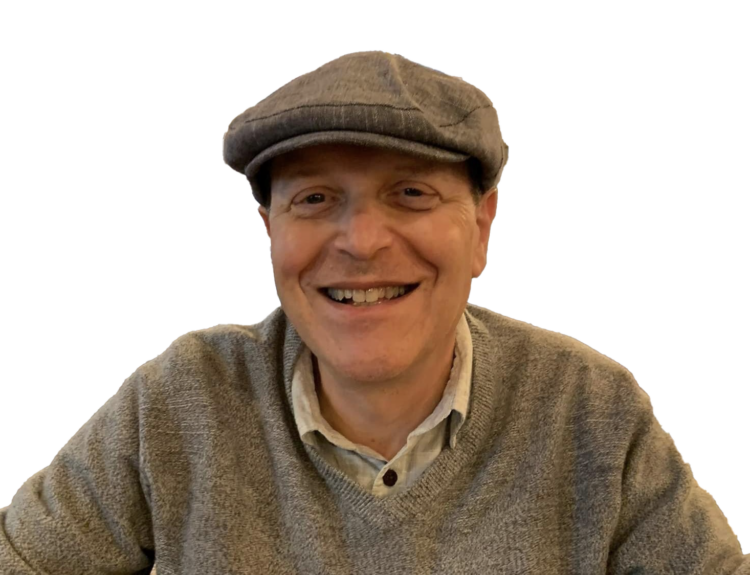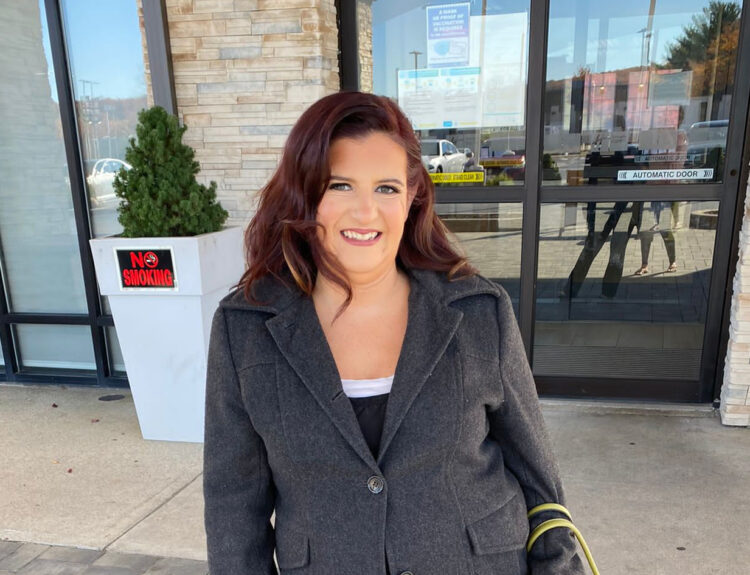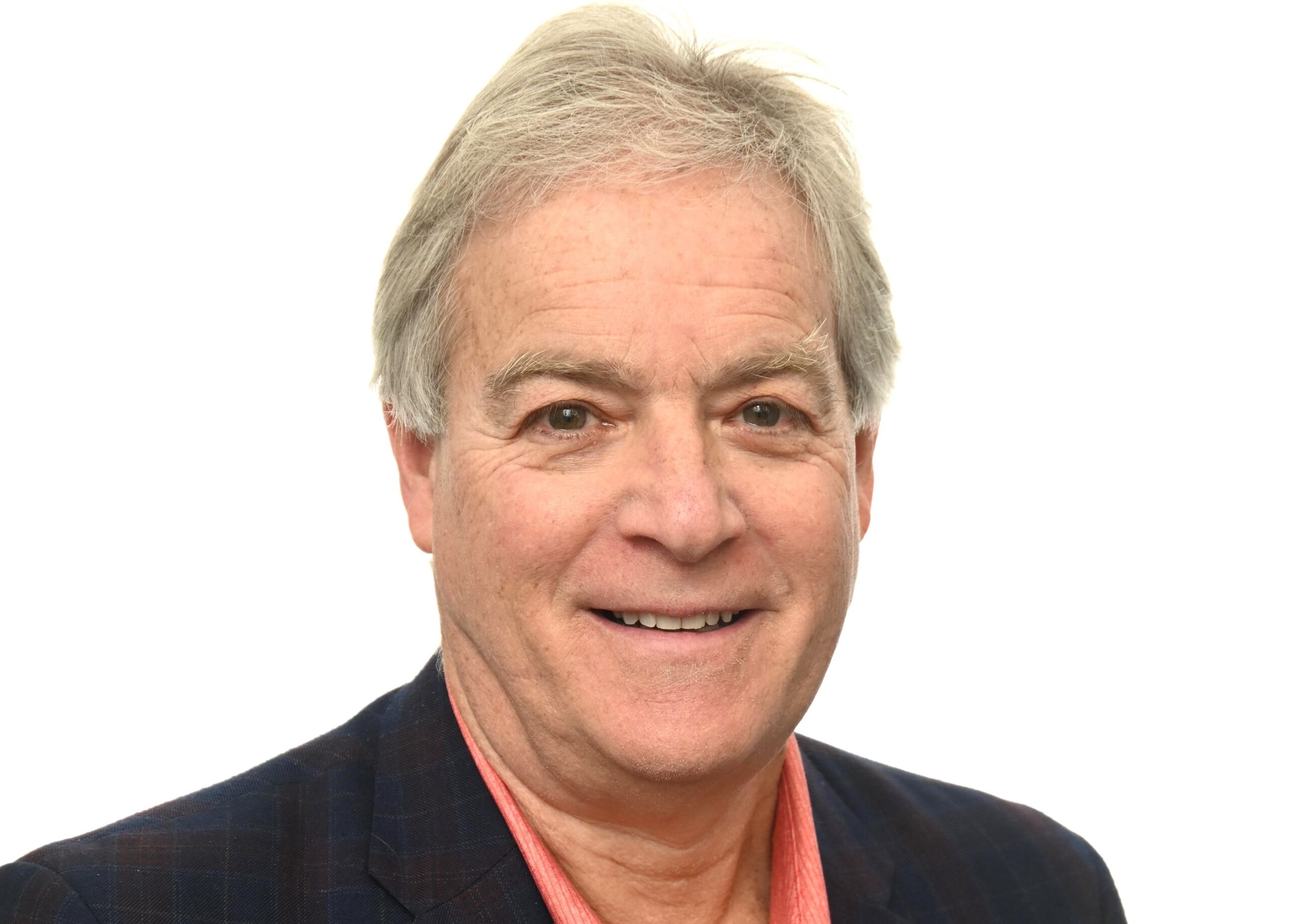
You are the founder and president of The World War II Foundation. Tell us what you did before starting it.
I graduated from the University of Rhode Island with a degree in Journalism. I then became a television sportscaster in many TV markets around the country, including Michigan, Washington State, Florida, and New York, and finished up at Channel 10 in Providence in 2004. I was at Channel 10 for five years. The highlight was working with Doug White. I loved that man. Growing up watching and working with him and Patrice Wood and Gary Ley was the best for a Rhode Island boy like me. Covering the Patriots’ first Super Bowl win in 2002, just after 9/11, was also an incredible experience. I’ll never forget sitting down on the TV set at night and having Doug White greet me with “Mr. Gray.” How cool is that? That was as good as it got for me—just such a kind man.
So what led you to create the foundation, and when did you start?
At the end of my television sports career, I’d say the last two years, I always had that feeling I was destined to do more significant, important things. To utilize the skills learned in TV and as a true journalist and apply them to telling more critical stories, I covered both sports and news stories at Channel 10 and throughout my 15 years as a journalist, so I felt very well-rounded as a writer, communicator, interviewer, producer, and storyteller. I felt like my shelf life in television news was up. Everyone has a shelf life in TV News. Mine was 15 years; even that was a stretch. I probably started thinking about getting out after 12 years but stuck around because I enjoyed covering sports in my home state for a great TV station. TV was fun and challenging but not meaningful to me. I knew exactly what I wanted to do when I left television, and that was not to be in front of the camera anymore. I wanted to tell the stories of World War II, a subject I had been interested in since I was six. My dad laughed, being a former reporter himself for the Providence Journal. He said, ‘How will you make a living doing that?’ Well, that was 33 films ago and some incredible adventures worldwide. He’s always amazed that we, as an organization, have pulled this off. He’s my role model, so my determination comes from him and, of course, my mom. They started the East Providence Post in the 1950s, so risk and reward are part of our family’s DNA. We did our first film in 2006 and became the World War II Foundation, a non-profit, in 2011. I now look at the state of TV news and think the timing was perfect.
Since then, the foundation has grown enormously, and today many missions use military parlance. Tell us first about the documentary films.
We film all our documentaries on location throughout the world, France, England, Poland, Germany, Holland, Italy, Belgium, Luxembourg, Japan, Guadalcanal, Iwo Jima, Peleliu, the Philippines, Pearl Harbor; you name it. We go back and film what these remote locations look like today. We focus more on the legacy of the men and women who were caught up in the battles or the Holocaust rather than the dates and strategies of the conflict. Our audience is high school students, college students, and viewers in their 20’s, 30’s, and 40’s. We try and get our films to the point where they resonate with younger people today, mainly because World War II isn’t taught much in schools anymore. A whole generation knows nothing about how people their age saved the world and how they went about it. That’s sad. The WWII generation left us a blueprint of how to work hard, be humble and get the job done. More young people today would be better equipped to overcome adversity and challenges if they knew people their age did it 80 years ago and what that generation was up against. Part of the blueprint they left us is a “how-to” manual to keep moving forward.
The films are also narrated by celebrities, from Darius Rucker to Luke Bryan and Tom Brokaw to Bill Belichick. I’m proud of the friends we have made along the way who support our mission.
I also work with some of the best videographers and music composers worldwide, including Jim Karpeichik, and Roger Cichy locally and Dave Beaty and John Paluzzi out of Florida. I’ve surrounded myself with very good people, and I’m fortunate.
Where are they aired and can viewers find them online?
Our films air all over the United States on PBS and Public Television stations. They also air internationally in China, France, England, Italy, Australia, and many other countries. The films rank in the top five of most required programs nationally by PBS affiliates, so there still is a strong interest in these personal stories, even if our school system has largely forgotten them. We stream all our films for free from our website, and people can also find several on Amazon Prime.
What about the World War II Foundation Global Education Center and Museum, which is located in South Kingstown?
I have been collecting World War II artifacts since I was a kid. The museum is a by-product of my many trips to many places and the friends I’ve met along the way. We get many donations too. The museum was recently labeled ‘the most comprehensive World War II Museum in the United States.” We’re proud of that because the focus at the museum is the war in its totality, from Europe and the Pacific to Russia and the Holocaust. It’s an excellent place for students to visit and has become very popular for school field trips. We pick up all the costs for a class to come to the museum, from the bus to the tickets. All the students who have visited from Southeastern New England have been great.
And the Senator Bob Dole World War II Leadership Award, given annually?
Before he passed away, we presented Sen. Dole with our first World War II Foundation Leadership Award. While he was on stage, I asked, ‘Senator Dole would it be ok if we named this award after you, in your honor?’. He couldn’t say no at that point. I had him cornered! He’s so humble. He was great about it, and this year, we presented the award to Lt. Col. Harry Stewart, one of the very last Tuskegee Airmen fighter pilots. The event is being held at the National Museum of African American History and Culture in front of roughly 400 people, including several of the Joint Chiefs of Staff. It’s become one of Washington DC’s most popular events to attend.
Why are the stories of the men and women who served during the war, overseas and domestically, so important to tell?
We as a nation need reference points to remember that we have been through difficult periods in our country, and some blueprints still exist to show us how we overcame those challenges. We treat everything today like it’s happening for the first time, but history rhymes. We have been through almost every situation that arises today at some point in our history or in world history. Sure, it may have happened in a different century, with other technology, but a similar situation did play out, and we should be so taken aback. History is so important and it’s really depressing to see so many students have a lack of understanding of not only America’s brief history but that of the world in general.
Young people need to know that a soldier their age who landed on Omaha Beach on D-Day didn’t turn around from fear and head back to get on his landing craft. Sure, he was scared. He pulled down his helmet and moved forwards. He kept moving forward off the beach despite all the chaos, destruction, and death around him into France, Holland, Belgium, and Germany. It took time, but he helped win the war. Moving forward in life despite the odds helps young people win their battles in life. It’s inspiring to know these stories.
What is the relevance of their stories to the world in 2023?
Russia. Russia, Russia. If it looks like an invasion that would have happened in World War II, it smells like an invasion and leaves innocent civilians dead like an invasion; it must be an ignored lesson from 80 years ago. How many times have we heard of Russia’s invasion of Ukraine today compared to WWII? A Lot.
According to your website, https://wwiifoundation.org/, some 250 Second World War veterans pass on every day. Any estimate of how many are still alive?
Roughly 166,000 of the 16 million Americans who served are alive today.
Given the march of mortality, what are your filmmaking priorities now?
Our priority remains the same. Get the stories, tell the stories, and make sure the documentaries we produce relate in some way to the generation whom they can best serve. That would be today’s generation and future generations. We must not forget that many teenagers, young men, and women, most in their 20s, saved the world during World War II. That generation leaves a legacy that motivates, inspires, and educates this generation that they can accomplish great things, even when staring at insurmountable odds. We want these stories to resonate with students and adults from 15 to 55. The 60-plus crowd already knows about World War II. The young people repeating these actions in the future is what scares me. They must understand that war is not the answer. The World War II generation will be the first to tell them that.

